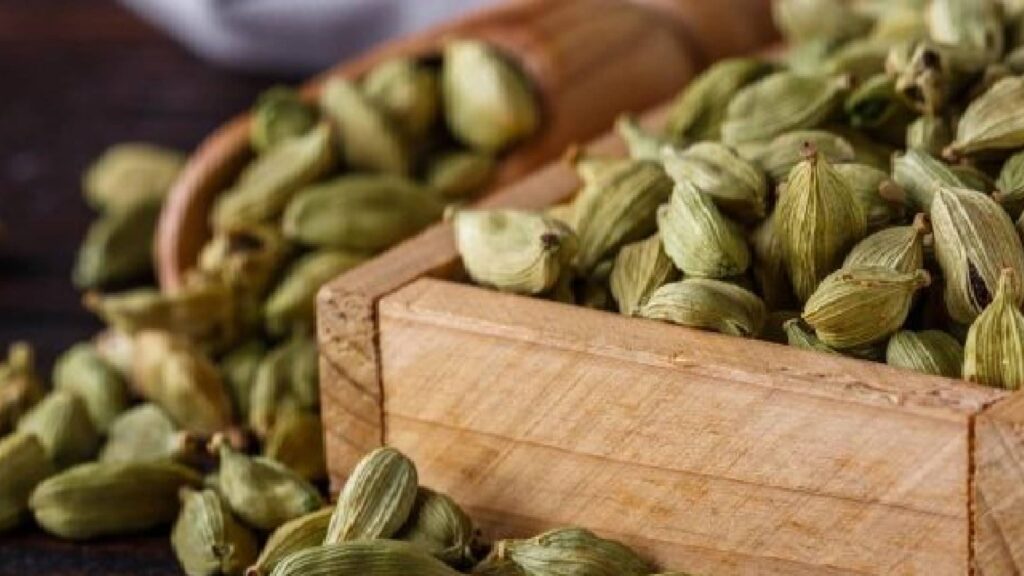Introduction
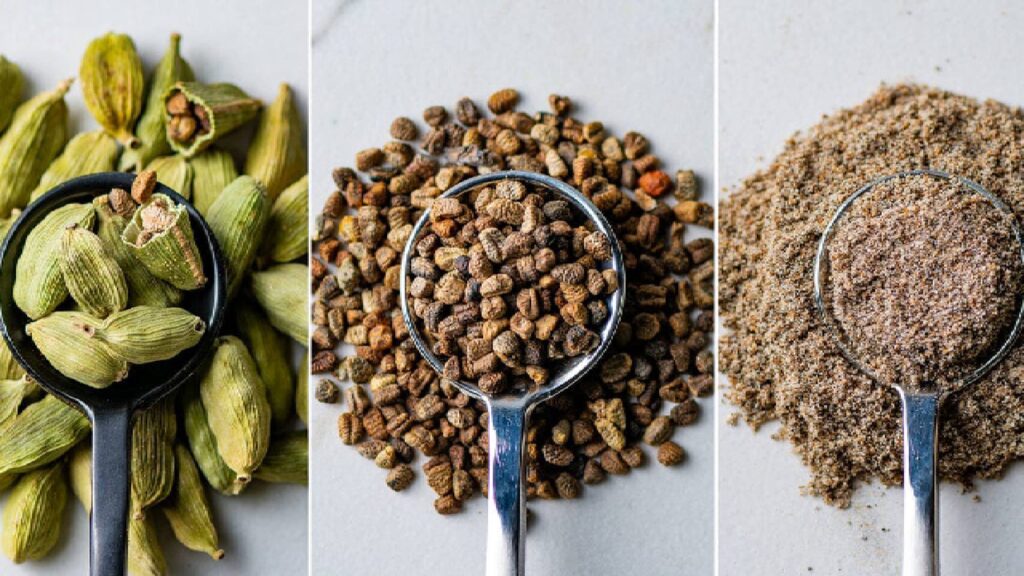
Green cardamom, often referred to as the queen of spices, is a highly valued ingredient known for its distinctive, aromatic flavor. This versatile spice is used across various culinary traditions, enhancing everything from savory dishes to sweet treats and beverages. In Indian, Middle Eastern, and Southeast Asian cuisines, green cardamom adds warmth and depth to curries, rice dishes, and spice blends like garam masala.
Beyond the kitchen, green cardamom has been used in traditional medicine for its digestive benefits, such as soothing indigestion and freshening breath. Its aromatic qualities also make it a popular choice in perfumes and aromatherapy. Whether used whole, ground, or as part of a spice blend, green cardamom is a powerful ingredient that elevates both everyday dishes and special occasions. “We have good quality cardamom shop now.
Botanical Overview
Plant Origin:
Species: Green cardamom belongs to the Zingiberaceae family, which also includes ginger and turmeric.
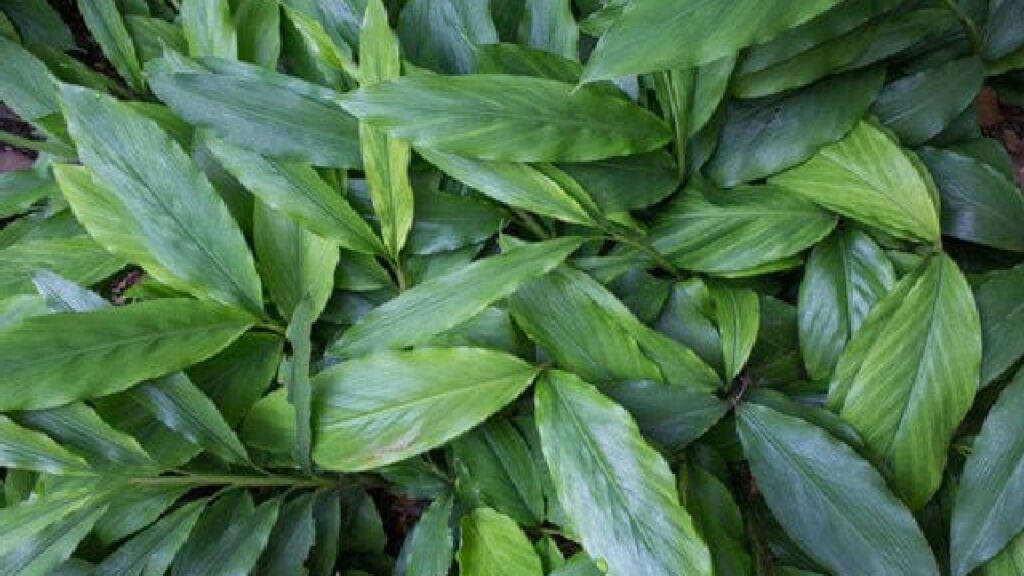
- Growing Conditions: Native to India and Sri Lanka, it thrives in tropical rainforests at high altitudes. The plant requires a warm, humid climate with ample rainfall.
- Cultivation: Cardamom plants are perennial, reaching heights of up to 10 feet. The pods are harvested before they fully ripen, then dried to preserve their flavor and aroma.
Pod and Seed Structure:
The Pod: The green outer shell is thin and papery, enclosing the seeds within. It is generally discarded after use, though it can also be used to infuse liquids.
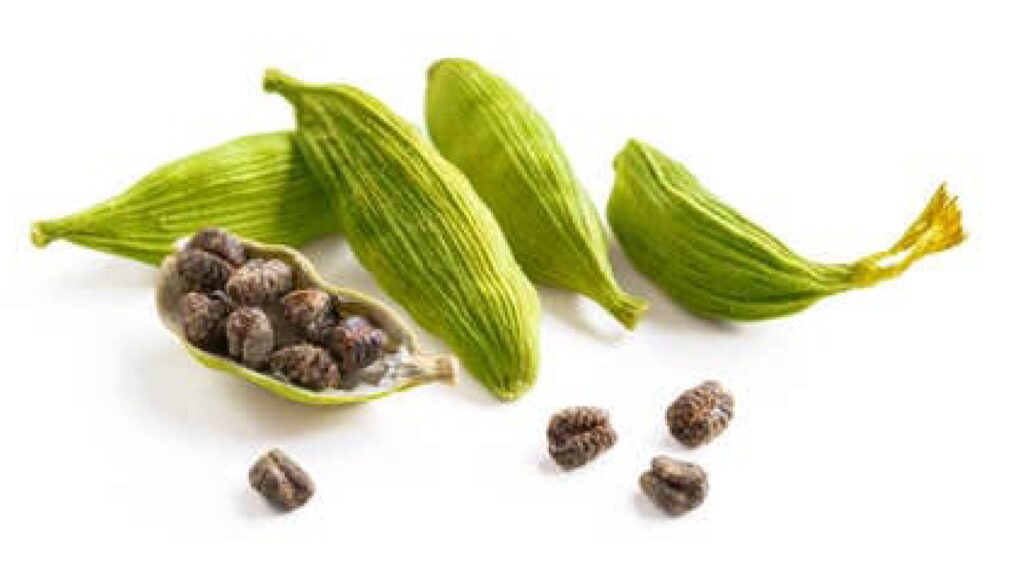
The Seeds: The seeds are small, black, and highly aromatic, containing the essential oils that give cardamom its distinctive flavor.
Culinary Uses
Baking and Sweets:
- Applications:
- Flavor Profile: Cardamom’s flavor is complex, combining sweet, spicy, and slightly floral notes. It pairs well with both sweet and savory ingredients, making it a popular choice in baking.
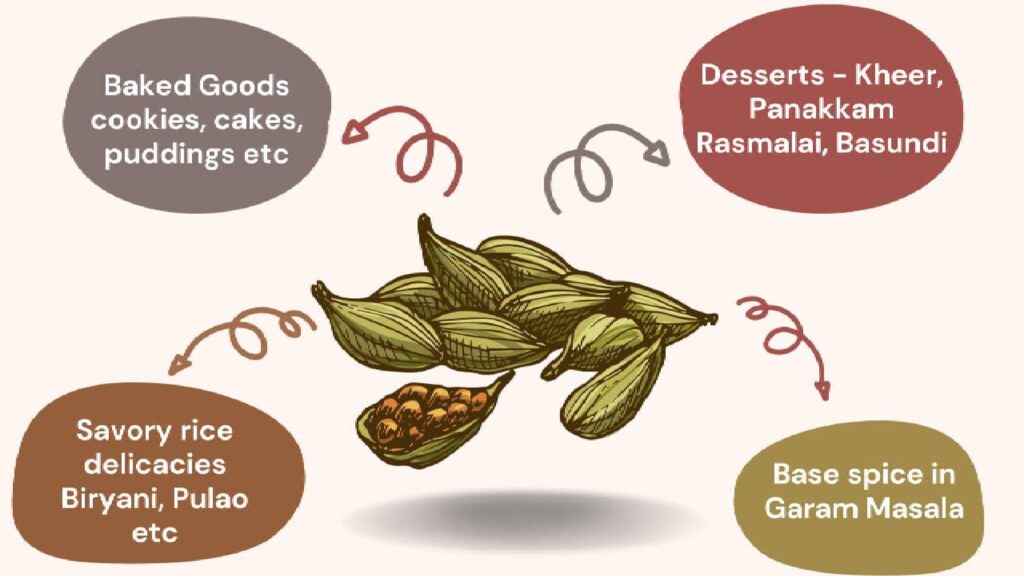
- Middle Eastern and Indian Sweets: Cardamom is essential in sweets like baklava, halva, and Indian desserts such as kheer (rice pudding), kulfi (a frozen dairy dessert), and gulab jamun (fried dough balls soaked in syrup).
- Modern Baking: It’s increasingly used in global cuisine for cakes, cookies, and pastries, where it adds an exotic twist to familiar recipes.
Spice Blends:
- Garam Masala:
- Composition: A traditional Indian spice mix, garam masala includes cardamom along with cinnamon, cloves, cumin, and coriander. The cardamom adds a sweet, warming note that balances the stronger spices.
- Usage: Garam masala is added toward the end of cooking to preserve its aromatic qualities. It’s used in a wide range of dishes, from curries to soups and even sprinkled over roasted vegetables.

Curry Powders:
- Varieties: Different regions have their own versions of curry powder, but cardamom is a common ingredient. It contributes to the rich, layered flavors characteristic of Indian, Thai, and Caribbean curries.
- Function: In curry powders, cardamom adds depth and a slight sweetness that complements the heat from chili peppers and the earthiness of turmeric and cumin.
Beverages:
- Masala Chai:
- Preparation: Masala chai is a spiced tea popular in India. Cardamom pods are crushed to release their oils and boiled with black tea, milk, and other spices like ginger, cinnamon, and cloves. The result is a rich, aromatic beverage that is both warming and soothing.
- Variations: Some recipes use cardamom as the primary spice, while others combine it with other spices for a more complex flavor.
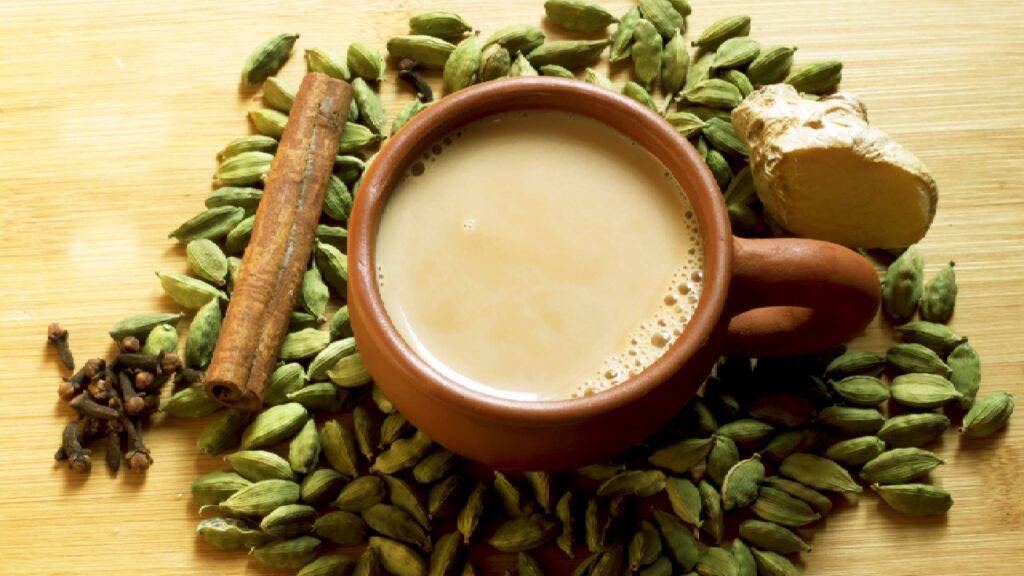
Cardamom Coffee:
- Middle Eastern Tradition: In the Middle East, cardamom is commonly added to coffee. The spice is either ground with the coffee beans or brewed directly with the coffee, creating a fragrant and flavorful drink. This practice is especially popular in countries like Saudi Arabia and Turkey.
- Scandinavian Tradition: In Scandinavian countries, cardamom coffee is also enjoyed, particularly in Sweden. It’s often served with sweet pastries that contain cardamom, creating a harmonious flavor pairing.
- Alcoholic Beverages:
- Cocktails: Cardamom is used in modern mixology to add a spicy, aromatic note to cocktails. It pairs well with gin, rum, and vodka, and is often used in spiced syrups or infused spirits.
- Liqueurs: Some liqueurs and bitters include cardamom as a key ingredient, enhancing their complexity and flavor profile.
Savory Dishes:
- Rice Dishes:
- Biryani: Cardamom is essential in biryani, a spiced rice dish popular in South Asia. The pods are added during the cooking process, infusing the rice with their aroma and flavor. The pods are typically removed before serving, but they impart a distinctive sweetness to the dish.
- Pilafs: Similarly, in pilafs (or pulao), cardamom is used to flavor the rice, often in combination with other spices like cinnamon, cloves, and bay leaves.
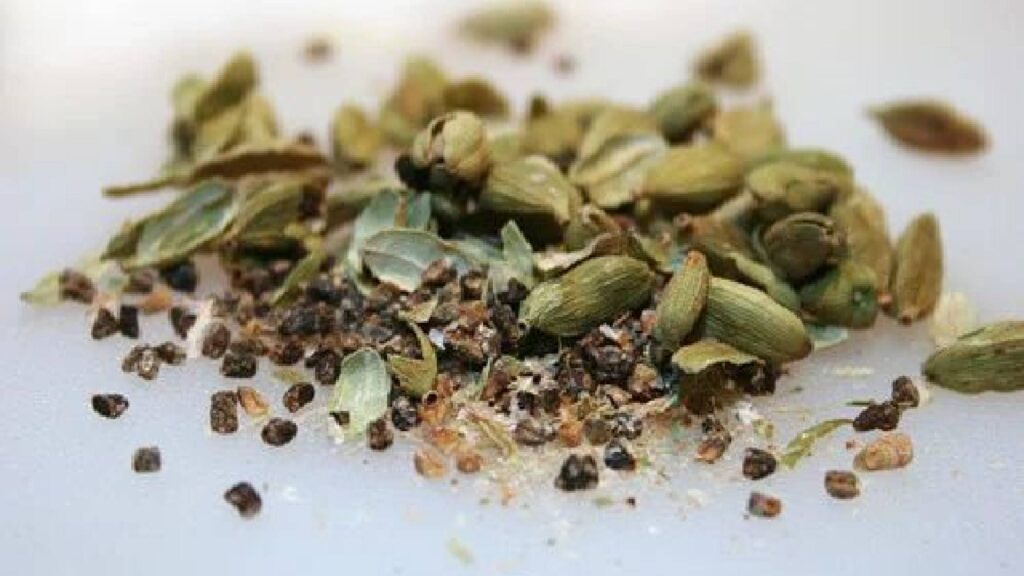
Stews and Curries:
- Meat Curries: Cardamom is used in meat curries, particularly in Indian and Middle Eastern cuisines. It complements the richness of meats like lamb, beef, and chicken, adding a subtle sweetness that balances the spices and heat.
- Vegetarian Curries: In vegetarian dishes, cardamom pairs well with legumes, lentils, and vegetables, adding depth and warmth to the dish.
- Middle Eastern Stews: In stews like Moroccan tagine, cardamom is used alongside other spices like cumin, coriander, and saffron. It enhances the dish’s complexity and pairs well with dried fruits, nuts, and honey.
Marinades and Rubs:
- Meat Marinades: Cardamom is included in marinades for meats, where it helps tenderize and flavor the meat. It works particularly well with yogurt-based marinades, as the spice’s sweetness complements the tanginess of yogurt.
- Dry Rubs: Ground cardamom is also used in dry rubs for grilling or roasting meat, adding a unique flavor to the crust.
Medicinal Uses
Digestive Health:
- Mechanism: Cardamom is known for its ability to stimulate digestion. It promotes the secretion of digestive enzymes and bile, helping to break down food more efficiently.
- Conditions Treated: It is traditionally used to treat indigestion, bloating, gas, and heartburn. Cardamom can also help alleviate nausea and vomiting, making it a common remedy for morning sickness and motion sickness.
- Scientific Evidence: Studies have shown that cardamom may improve gastric motility and reduce symptoms of dyspepsia (indigestion). It is also used in some cultures to treat stomach ulcers.
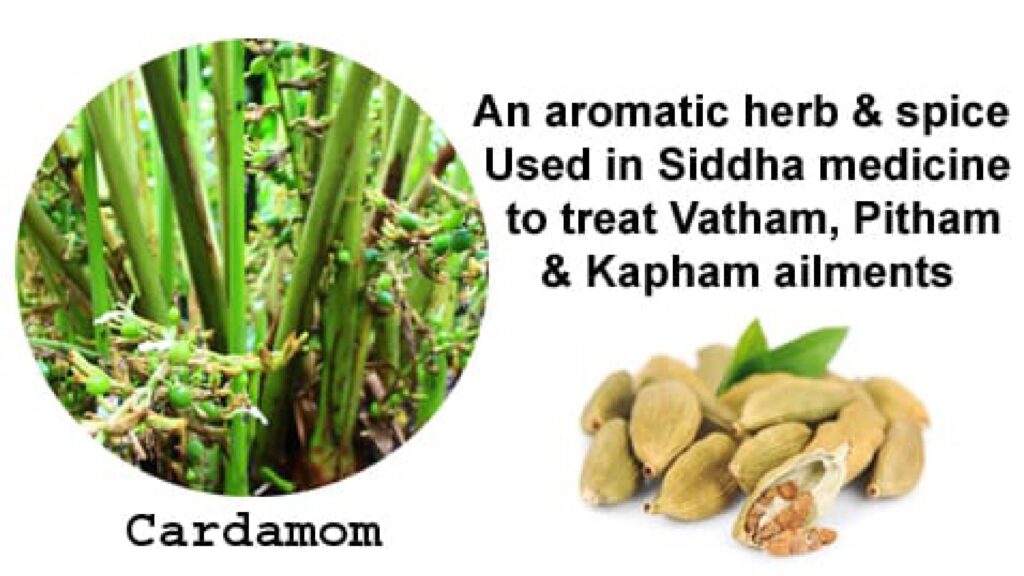
Breath Freshener:
- Traditional Use: In many cultures, chewing cardamom seeds or pods is a traditional method for freshening breath. The spice’s strong aroma masks bad breath, while its antimicrobial properties help reduce oral bacteria.
- Oral Health: Cardamom can stimulate saliva production, which helps cleanse the mouth and reduce bacteria. It’s also used in some natural toothpaste and mouthwash formulations for its freshening and antiseptic properties.
Breath Freshener:
- Traditional Use: In many cultures, chewing cardamom seeds or pods is a traditional method for freshening breath. The spice’s strong aroma masks bad breath, while its antimicrobial properties help reduce oral bacteria.
- Oral Health: Cardamom can stimulate saliva production, which helps cleanse the mouth and reduce bacteria. It’s also used in some natural toothpaste and mouthwash formulations for its freshening and antiseptic properties.
Anti-inflammatory:
- Active Compounds: Cardamom contains several bioactive compounds, such as cineole and alpha-terpineol, which have anti-inflammatory effects. These compounds can help reduce inflammation and pain in the body.
- Applications: It is used to treat inflammatory conditions such as arthritis, where it helps reduce swelling and pain in the joints. In traditional medicine, cardamom is sometimes applied topically in the form of an oil or poultice to soothe inflamed tissues.
- Research: Some studies suggest that cardamom can inhibit the production of pro-inflammatory cytokines, which are involved in chronic inflammatory diseases.

Antioxidant:
- Oxidative Stress: Cardamom is rich in antioxidants, which help neutralize free radicals and reduce oxidative stress. This is important for protecting cells from damage and preventing chronic diseases.
- Health Benefits: Regular consumption of cardamom may lower the risk of conditions associated with oxidative stress, such as heart disease, cancer, and diabetes. The antioxidants in cardamom can also support overall health by protecting against aging and improving immune function.
- Nutritional Content: The spice contains high levels of flavonoids and phenolic acids, which are known for their strong antioxidant properties.
Respiratory Health:
- Expectorant Properties: Cardamom has mild expectorant properties, making it useful in treating respiratory conditions like coughs, bronchitis, and asthma. It helps clear mucus from the lungs and airways, making breathing easier.
- Aromatic Benefits: The spice’s strong aroma can help relieve symptoms of congestion and sinusitis. Inhalation of cardamom vapor or the use of cardamom essential oil in steam therapy can help open up the airways.
- Traditional Remedies: In traditional medicine, cardamom is used in formulations to treat respiratory infections, colds, and flu. It’s often combined with other spices like ginger and clove for enhanced effects.

Diuretic Properties:
- Water Retention: Cardamom acts as a natural diuretic, helping to reduce water retention and promote the elimination of excess fluid from the body. This can be beneficial for individuals with conditions like hypertension, where reducing fluid volume can help lower blood pressure.
- Detoxification: By increasing urine output, cardamom also helps in the removal of toxins and waste products from the body. It is sometimes used in detoxifying regimens and cleanses.
Aromatic Uses
Essential Oil:
- Extraction: Cardamom essential oil is obtained through steam distillation of the seeds. The oil has a sweet, spicy aroma and is used in various therapeutic and aromatic applications.
- Aromatherapy: In aromatherapy, cardamom essential oil is valued for its calming and uplifting effects. It is often used to reduce stress, anxiety, and mental fatigue. The oil is also believed to improve focus and concentration, making it popular in blends for work or study.

- Massage and Bath: Cardamom oil is used in massage therapy for its warming and soothing properties. It helps relax muscles and can alleviate pain and stiffness. In bath products, the oil provides a luxurious, aromatic experience that promotes relaxation.
- Respiratory Support: Inhalation of cardamom essential oil can help with respiratory conditions by clearing the airways and reducing congestion. It’s commonly used in steam therapy or diffusers during cold and flu season.
Perfumes:
- Fragrance Profile: Cardamom is a popular ingredient in perfumery, where it is used as a middle or top note. Its spicy, sweet, and slightly woody scent adds depth and warmth to fragrances.

- Combinations: Cardamom pairs well with other spices like cinnamon and nutmeg, as well as floral notes like rose and jasmine. It’s often used in both men’s and women’s fragrances, contributing to an exotic and sophisticated scent profile.
- Luxury Perfumes: Many high-end and niche perfumes include cardamom as a key ingredient. It adds an element of mystery and allure, making the fragrance more complex and memorable.
Cultural Significance
Historical Importance:
- Ancient Trade: Cardamom has been traded for thousands of years, dating back to ancient civilizations. It was highly valued in ancient Egypt, Greece, and Rome, where it was used as a spice, medicine, and in religious rituals.

- Medicinal Traditions: Cardamom has a long history of use in traditional medicine systems like Ayurveda and Traditional Chinese Medicine (TCM). In these systems, it is considered a warming spice that balances the body’s energies and promotes overall health.
- Rituals and Offerings: In India, cardamom is often used in religious rituals and as an offering to deities. It is also used in various cultural ceremonies, symbolizing hospitality and auspiciousness.
Modern Usage:
- Global Cuisine: Cardamom is now used in cuisines around the world, from Indian and Middle Eastern to Scandinavian and Latin American. Its versatility has made it a favorite in both traditional and contemporary cooking.
- Market Value: Due to its labor-intensive cultivation and harvesting process, cardamom is one of the most expensive spices by weight. However, its high demand in global markets ensures its continued production and economic importance.
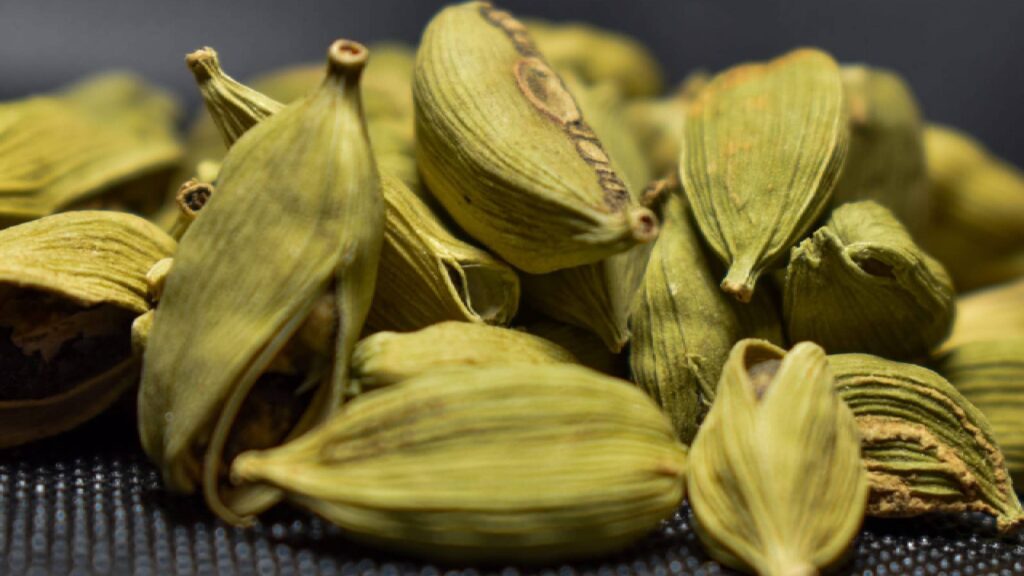
- Health and Wellness: With the growing interest in natural and holistic health, cardamom is increasingly used in supplements, teas, and wellness products. Its benefits for digestion, respiratory health, and overall well-being make it a popular choice for those seeking natural remedies.
Economic Impact:
- Production: India and Guatemala are the largest producers of green cardamom, with significant exports to countries around the world. The spice is a valuable cash crop, contributing to the economies of these regions.
